14 March
1471 - Death of Sir Thomas Malory, known for his work "Le Morte d'Arthur", which he wrote in prison. He was laid to rest in St Francis's Chapel, Greyfriars, Newgate.
1540 - Death of Sir John Port, Judge. He is known for mumbling in 1535 in Lord Dacre's case and being counted on the wrong side, giving the Crown a majority. He was taken ill at Worcester during the Lent assize and died at Bewdley.
1553 – Death of Arthur Bulkeley, Bishop of Bangor, at his home in Bangor. He was buried in the cathedral choir.
1555 - Death of Sir John Russell, 1st Earl of Bedford, courtier, envoy and landowner, at his home on the Strand in London. Russell served Henry VIII as Lord High Admiral and Lord Privy Seal, following the fall of Thomas Cromwell. He was an executor of Henry VIII's will, and carried on as Lord Privy Seal in the reigns of Edward VI and Mary I. You will notice that the Holbein drawing says "with one Eye" and that is because Russell lost his right eye from an arrow wound at the Siege of Morlaix in July 1522.
15 March
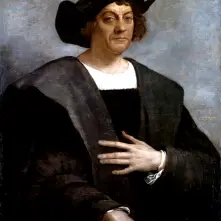
Christopher Columbus
1493 – Arrival of Christopher Columbus, explorer and navigator, at Palos in Spain after his 1492 voyage to the New World.
1504 – Death of John Arundell, Bishop of Exeter, at Exeter House in the Strand, London. He was buried at St Clement Danes Church in London.
1532 – William Warham, Archbishop of Canterbury, criticised Henry VIII in the House of Lords when Parliament was discussing the annulment. The King responded with what historian G. W. Bernard describes as “foul language”.
1551 - The Lady Mary, sister of Edward VI, and the future Mary I, rode through London in a procession carrying rosaries “to make an open profession, no doubt, of their devotion for the mass”.
1554 – Marian martyr John Hooper was deprived of the bishopric of Gloucester while imprisoned in Fleet Prison. He had been charged with owing over five hundred pounds in unpaid first fruits, a charge he denied.
1628 – Burial of composer John Bull in the Groenplats cemetery near Antwerp Cathedral.
16 March
1485 - Death of Anne (née Neville), Queen Consort of Richard III, in London. She was buried on the south side of the high altar at Westminster Abbey. Anne was the daughter of Richard Neville, 16th Earl of Warwick and a man known as the “Kingmaker”, and his wife, Anne (née Beauchamp). She married Edward, Prince of Wales and son of Henry VI, in 1470 but he was killed in 1471 at the Battle of Tewkesbury. Anne went on to marry Richard, Duke of Gloucester sometime before July 1473, and the couple became King and Queen on 26th June 1483.
1503 – Death of Edward Story, Bishop of Chichester. He was buried at the cathedral, on the north side of the altar.
1523 – Birth of Anthony Rudolph Chevallier, French Protestant Hebraist, at Montchamps, Normandy, France. It appears that Chevallier tutored Princess Elizabeth, the future Elizabeth I, in French and Hebrew in the early 1550s. During Mary I's reign, he taught Hebrew in Strasbourg and Geneva, and in Elizabeth I's reign he taught Hebrew at Cambridge. He went back to France in 1572, but the St Bartholomew’s Day Massacre caused him to flee to Guernsey, and he died there in October 1572.
1533 – Death of John Bourchier, 2nd Baron Berners, soldier, translator and diplomat, at Calais, while serving Henry VIII as Deputy of Calais. He was succeeded by Arthur Plantagenet, Viscount Lisle. Berners' translations included “Froissart's Chronicles”, “Golden Book of Marcus Aurelius”, “The History of Arthur of Lytell Brytaine” and “Huon of Bordeaux”.
1553 – Death of Sir Richard Lyster, Judge and Chief Justice of the King's Bench. He was buried at St Michael's Church in Southampton.
1559 – Death of Sir Anthony St Leger, Lord Deputy of Ireland, at Ulcombe, Kent.He was appointed Lord Deputy in 1540 and served in the position until his death, although he was being investigated for keeping false accounts at his death. He was buried at Ulcombe Parish Church.
1561 - The body of Marie de Guise (Mary of Guise), mother of Mary, Queen of Scots, was put on a ship heading to France to be buried at Rheims.
1589 (15th or 16th) – Executions of priests Robert Dalby and John Amias at York as traitors, due to their Catholic faith.
1590 (15th or 16th) – Death of Bartholomew Clerke, civil lawyer, politician and diplomat, at Clapham. Clerke served Elizabeth I as a member of Parliament, as an ambassador to the French court and to Flanders, and Archdeacon of Wells. He was buried in the old church at Clapham, where he was Lord of the Manor.
1593 – Death of Thomas Snagge, lawyer, Serjeant-at-Law and Speaker of the House of Commons in Elizabeth I's reign, in his chambers at Serjeants' Inn. He was laid to rest in St Mary's Church, Marston Moretaine, in Bedfordshire.
1619 – Burial of actor Richard Burbage at St Leonard's Church, Shoreditch.
17 March
1473 – Birth of James IV, King of Scots, at Stirling in Scotland. He was the eldest son of James III and Margaret of Denmark, the husband of Margaret Tudor and the father of King James V. James' reign lasted from June 1488 to 9th September 1513 when he was killed at the Battle of Flodden.
1565 - Alexander Ales (Alesius, Aless), theologian and reformer, died in Edinburgh. Ales's works include Cohortatio ad Concordiam Pietatis, missa in Patriam suam (1544), Ad duos et brevis triginta articulos … aeditos a theologis Lovaniensibus brevis & moderata responsio (1545) Expositio Libri Psalmorum Davidis (1550), Ad libellum Ludovici Nogarolae … de traditionibus apostolicis & earum necessitate responsio (1556) and Cohortatio ad Pietatis Concordiam ineundam (1559).
1570 – Death of William Herbert, 1st Earl of Pembroke, soldier, courtier and landowner, at Hampton Court, aged sixty-three. Herbert was married to Anne Parr, sister of Catherine Parr. Herbert served Henry VIII as an Esquire of the Body, a 'gentleman spear' and a Gentleman of the King's Privy Chamber. When his sister-in-law Catherine Parr became queen, he was even more favoured, was awarded various grants and offices, and was promoted to be Joint Chief Gentleman of the Privy Chamber. He was also named as an executor of the King's will. Herbert was made a Knight of the Garter in Edward VI's reign and won favour with Mary I by helping to put down Wyatt's Rebellion in 1554. He continued to be in favour in Elizabeth's reign.
1612 – Death of Thomas Holland, Calvinist scholar and theologian, at Exeter College, Oxford. He was buried in the University Church of St Mary the Virgin, in the chancel. Holland, with six other scholars, helped to translate the prophetic books of the “Old Testament” for the “Authorised Version of the Bible”, and held the positions of Rector of Exeter College and Regius Professor of Divinity.
18 March
1496 - Birth of Mary Tudor, Queen of France, daughter of Henry VII and Elizabeth of York, and sister of Henry VIII. She married twice: Louis XII of France, who died less than three months after their marriage, and Charles Brandon, Duke of Suffolk. Mary was the grandmother of Lady Jane Grey.
1496 – Death of Thomas Burgh, Baron Burgh, soldier and administrator. He was buried in the chantry chapel he had built in Gainsborough Parish Church. Burgh had served as an Esquire of the Body, Master of the Horse and Privy Councillor to Edward IV, and also served Henry VII as Knight of the Body and Privy Councillor.
1539 – Death of Sir Robert Wingfield, diplomat, probably in Calais. He was laid to rest in St Nicholas Church, Calais. Wingfield served both Henry VII and Henry VIII as a diplomat, and was appointed Lord Deputy of Calais in 1526.
1601 – Execution of Sir Christopher Blount, soldier, secret agent and rebel, after his involvement in the rebellion of Robert Devereux, Earl of Essex. He was executed at the Tower of London for high treason and buried there. Blount corresponded with Thomas Morgan, an exiled agent of Mary, Queen of Scots, in Paris, but as he was the Earl of Leicester's Master of the Horse at the time, it appears that he was working as an agent for Leicester and Sir Francis Walsingham. Blount married Leicester's widow, Lettice (née Knollys) in the spring of 1589.
19 March
1563 - Deaths of Arthur Brooke, translator and poet, and Sir Thomas Finch, knight-marshal, in the shipwreck of the Greyhound, off the coast of Rye in East Sussex.
1563 – Peace (Edict) of Amboise signed at the Château of Amboise by Catherine de' Medici, as regent for her son, Charles IX. Catherine initiated this truce after the assassination of Francis, Duke of Guise, at the Siege of Orléans. The Edict ended the first phase of the French Wars of Religion and guaranteed the Huguenots religious privileges and freedoms. Peace did not last long, however.
1577 – Death of Edmund Harman, former barber of Henry VIII, at Burford in Oxfordshire. He had retired there after Henry VIII's death. Harman was buried at Taynton Church.
1590 – Baptism of William Bradford, separatist and founder of the Plymouth Colony, Massachusetts, at Austerfield in Yorkshire. Bradford was Governor of the colony for over thirty years.
20 March
1469 – Birth of Cecily, Viscountess Welles and princess, also known as Cecily of York, third daughter of Edward IV and Elizabeth Woodville. She was born at Westminster Palace. A marriage alliance with Scotland was made in 1473 promising Cecily to James, the infant son of James III, but Cecily was still unmarried at her father's death in 1483. Her uncle, Richard III, arranged Cecily's marriage to Ralph Scrope of Upsall, but Henry VII dissolved the marriage in 1486 and she married John Welles, Viscount Welles, the King's half-uncle. After Welles' death in 1499, Cecily went on to marry Thomas Kyme of Friskney. Cecily died in 1507.
1544 – Baptism of Cuthbert Mayne, Roman Catholic priest and martyr. He was hanged, drawn and quartered at Launceston on 30th November 1577 after being charged with traitorously getting hold of a papal bull and publishing it at Golden Manor, defending the authority of the Pope, purchasing a number of Agnus Dei and giving them to people, and celebrating the Catholic mass.
1549 - Thomas Seymour, 1st Baron of Sudeley and Lord High Admiral, husband of the late Dowager Queen Catherine Parr and brother of Queen Jane Seymour and Protector Somerset, was executed after being charged with thirty-three counts of treason.
1555 – Burial of John Russell, Earl of Bedford, courtier and magnate, at Chenies, following his death 14th March. It was a lavish funeral with three hundred horses, all in black trappings.
1560 – Birth of Sir Edward Hoby, scholar, theologian, politician and diplomat, at Bisham in Berkshire. He was the eldest son of Sir Thomas Hoby and Elizabeth (née Cooke), daughter of Sir Anthony Cooke. Elizabeth I favoured Hoby, and used him on a number of secret missions.
1572 - Death of Mary Bassett (née Roper), translator and granddaughter of Sir Thomas More. Her education was praised by Roger Ascham and Nicholas Harpsfield, and she presented Mary I with a copy of five books of Eusebius's “Ecclesiastical History” which she had translated from Greek into English.



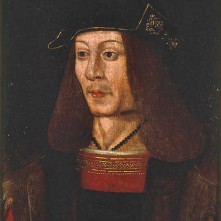
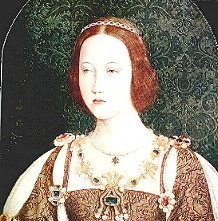

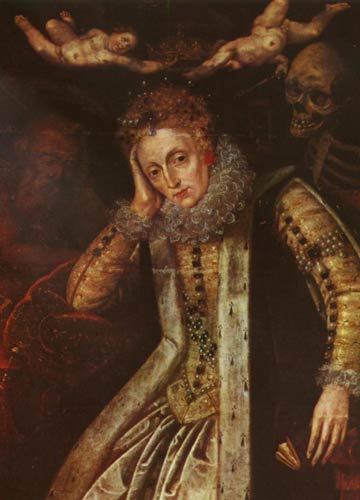
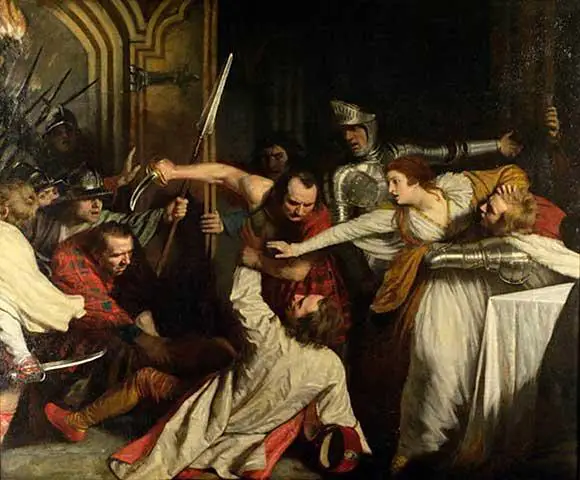
Leave a Reply